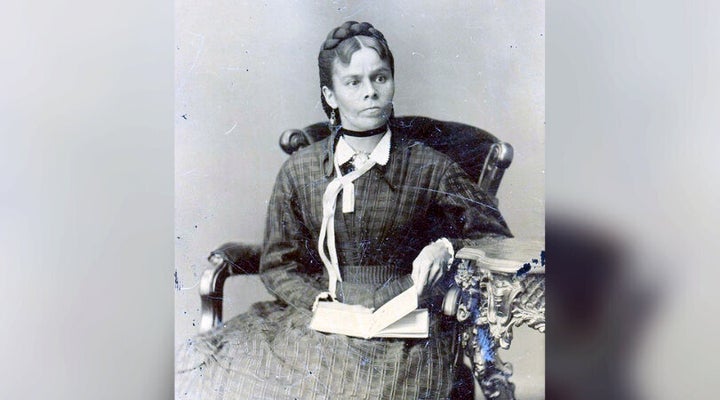
She travelled from her Ontario farm across the North Atlantic to Buckingham Palace. She gained Queen Victoria’s support for the Anishinaabe people’s struggle to keep their land, and made rousing speeches about Indigenous rights to the people of London. In between, she gave birth to her sixth child.
But for all her unflinching determination, Nahneebahweequay*, like many Indigenous women in history, remains largely unknown to Canadians. As far as historians can tell, there are no schools, streets or libraries named after her, and they’re unsure of exactly where her body was buried in Owen Sound, Ont., or the precise pronunciation of her name.
What they do know is she was relentless in her pursuit of justice for her people in the mid-1800s. Nahneebahweequay, meaning Upright Woman, (also spelled as Nahnebahweequa, Nahnebahwequay or Nahnebahwequa) was an accomplished speaker, writer and activist who refused to choose between two worlds. To her friends, she was Nahnee. To her husband and the English she was Catharine Sutton.
“I was left in the presence of the Queen. She came forward to meet me, and held out her hand for me to kiss, but I forgot to kiss it and only shook hands with her.”
- Nahneebahweequay
Nahneebahweequay, a Christian, married a white man, but never discarded her “Indian” identity. She wore European clothes but exhibited the qualities of an Anishinaabe leader — a listener, who set off to solve the problems of her people without fanfare. She died young without a triumphant ending, but exemplified extraordinary courage and commitment to the Indigenous rights movement, said Cecilia Morgan, a professor at the University of Toronto’s Ontario Institute for Studies and Education.
“She’s a heroine,” said Morgan, who focuses on gender and colonial history in 19th century Ontario and has researched Nahneebahweequay extensively. “Reading her words over and over again, ‘I am an Indian woman, I am an Indian woman,’ I had to take her seriously.
“She demonstrates what Indigenous people, and Indigenous women in particular, have been fighting for, for so long, and she reminds us settler colonialism isn’t history that’s over and done with. It repeats itself in this country.”
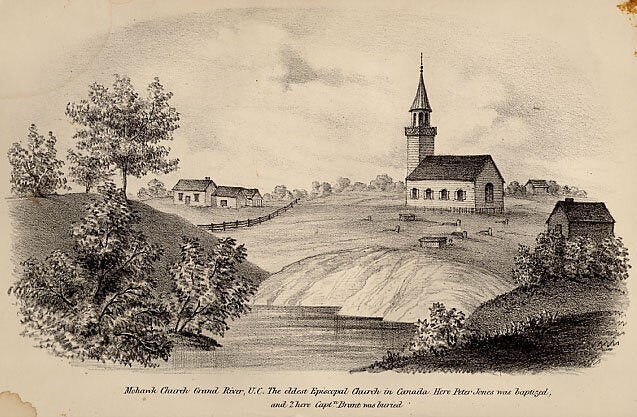
Nahneebahweequay was born in the autumn of 1824 on the flats of the Credit River, where the City of Mississauga, Ont. is today, according to the book Mississauga Portraits: Ojibwe Voices from Nineteenth-Century Canada by Donald B. Smith. She was raised Methodist in a community of about 200 people where the effects of colonization permeated everyday life. All of her siblings except for one sister died young, many from diseases originating from the British settler population — whooping cough, tuberculosis, measles. One brother drowned in a fast-moving channel of water diverted to a millwheel. Her father drank heavily to cope with his grief.
At 14 years old, Nahneebahweequay married English shoemaker, William Sutton. With the Mississaugas facing increasing pressure to give up their land to the government, Nahneebahweequay and Sutton relocated their growing family to Owen Sound, wrote Celia Haig-Brown, associate vice president of research at York University, in a 2002 research paper. The Anishinaabe band there allocated them 200 acres, where they cultivated a farm, built a house, barn and stables, and remained devout methodists.
“They proved to be the ideal citizens that the missionaries and government were purportedly looking for,” wrote Haig-Brown.
That wasn’t enough. In 1857, a few band members surrendered a gigantic swath of land, including Nahneebahweequay’s farm, to the government to be resold. Nahneebahweequay tried to buy her land back, but faced the frustrating hypocrisy of colonialism, according to Morgan’s book Travellers Through Empire: Indigenous Voyages from Early Canada.
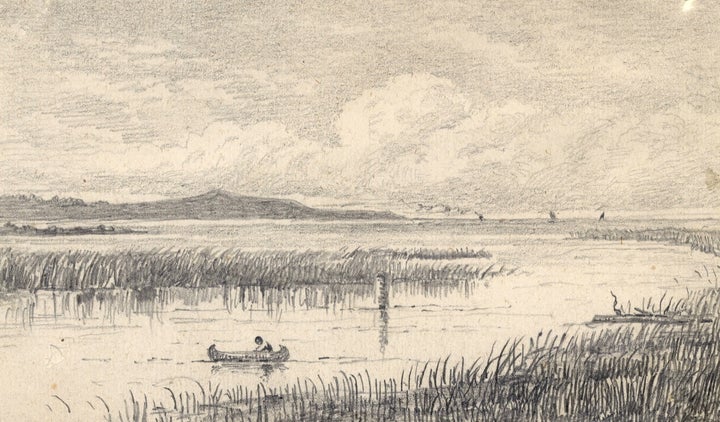
“When I wanted to buy my home, they took me for an Indian, and said I was an Indian: I could not buy,” Nahneebahweequay would later state during a speech in London in 1860. “And when I applied as an Indian for payment, they said I was a white woman, because I was married to a white man, and so you can see they can turn the thing whichever way they have a mind to just suit their cause.”
The General Indian Council appointed Nahneebahweequay as their representative to travel to England and inform the British authorities of the land dispute, and seek justice. She first went to New York City, where she spurred the Quaker community to support her mission, through riveting, tear-jerking talks sometimes an hour long, wrote Haig-Brown.
“She was capable of describing her feelings and enjoyments with a fluency and clearness that but few were capable of doing,” her husband would later write in public testimonial. “.... She was equally at home among all classes of the people, whether in the mansions of the rich, the poor man’s cottage, the backwoods shanty, or the bark of the rush wigwam of the Indian.”
Watch: The Indigenous history behind Canada’s tourist spots. Story continues below.
With the Quaker’s financial backing and connections, Nahneebahweequay boarded a ship to England, months into her pregnancy.
Other Indigenous leaders made the journey before and after Nahneebahweequay, to petition the Crown, often as a last hope to reclaim their land, but they were mostly men, said Morgan. What also set her apart was her exceptional ability to make connections and friends “at a time when racial boundaries were more and more being firmly drawn.”
On June 18, 1860, Nahneebahweequay met with the colonial secretary, the Duke of Newcastle. The next day, he introduced her to Queen Victoria.
“So you see I have been to see the Queen,” Nahneebahweequay wrote in a letter to her family. “The Duke went before us, and he made two bows, and then I was left in the presence of the Queen. She came forward to meet me, and held out her hand for me to kiss, but I forgot to kiss it and only shook hands with her.
“The Queen looked at her husband who stood on her left side, and smiled. Then the Queen bowed to me and said, ‘I am happy to promise you my aid and protection.’”
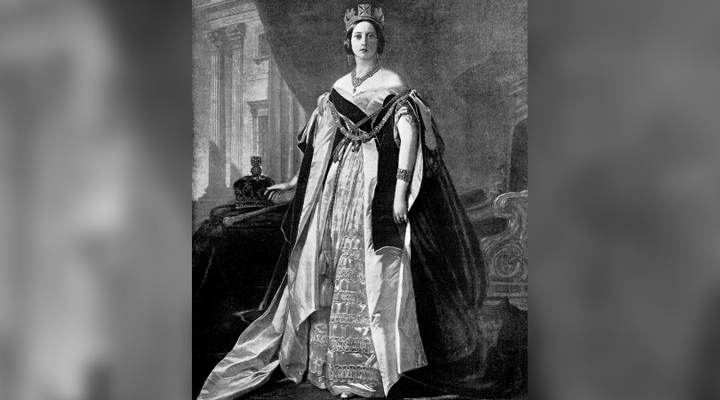
Queen Victoria noted the visit in her journal: “She is of the yellow colour of the American Indians, with black hair, and was dressed in a strange European dress with a coloured shawl and straw hat with feathers. She speaks English quite well and has come on behalf of her tribe to petition against some grievance as regards to their land.” Queen Victoria instructed the Duke of Newcastle to investigate the situation on his next trip to Canada.
Weeks later, Nahneebahweequay gave birth to a son, gave “a rousing speech” in Liverpool, and then travelled by ship and train back to Owen Sound, Haig-Brown told HuffPost Canada. “I marvelled at her accomplishments as a leader, a woman and a mother.
“Her courage in the face of failed promises, the power of her speeches, and her unflagging commitment to completing the task she had been trusted with were truly phenomenal. They interrupt stories of the limits placed on women at the time.”
In the months that followed, it became increasingly clear the Duke of Newcastle was not going to right any wrongs. Nahneebahweequay was never able to reclaim her land, although she continued to chronicle the plight of the Anishinaabe people and would offer them advice on navigating the political system and their rights, said Petal Furness, a manager at the Grey Roots Museum and Archives in Owen Sound.
Nahneebahweequay died suddenly at the age of 41 on Sept. 26, 1865, leaving behind her husband and seven children.
“Some people see her as not getting her property back as failing, but she was certainly an Indigenous pioneer,” said Furness, who is originally from Shuswap First Nation in B.C. At the museum, Furness has been working to preserve Nahneebahweequay’s legacy.
“She had a sense of herself, of being equal to the non-Indigenous folks and she was brave enough to speak up when she didn’t agree with decisions and fought for the rights of Indigenous women, at that time it was particularly unheard of. That’s why I’m so proud of her.”
*HuffPost Canada chose to use this spelling of her name based on research by the Grey Roots Museum and Archives.
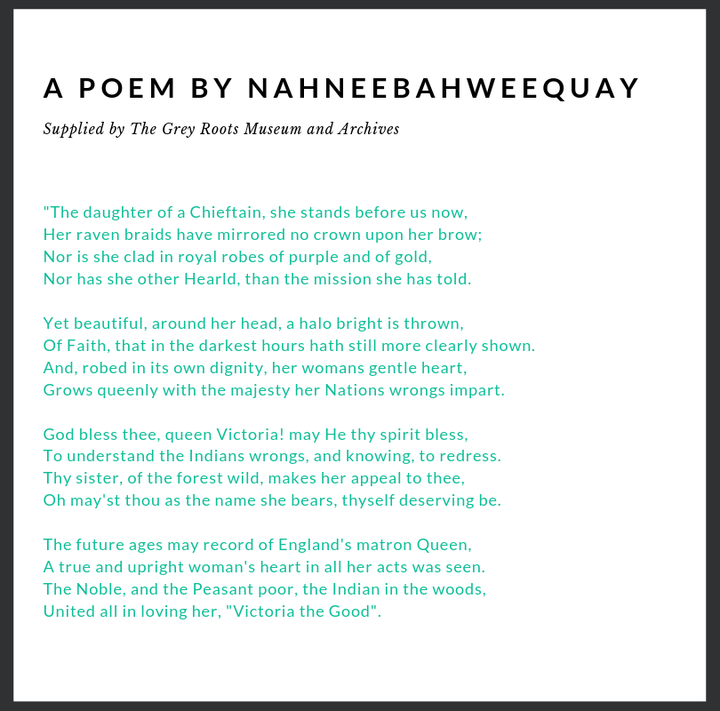
CORRECTION: An earlier version of this story stated the church in the second photo was near the Credit River in what is now Mississauga, Ont. In fact, the church is located near the Grand River in what is now Brantford, Ont.